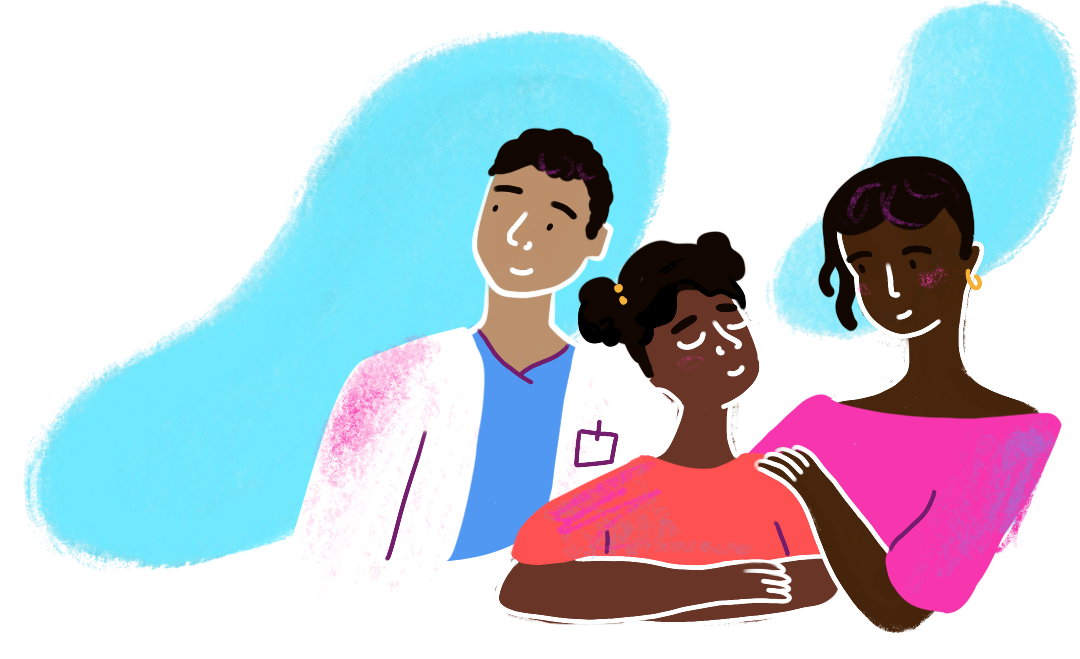How to advocate for open notes through Patient-Family Advisory Councils (PFACs)
As a PFAC member, you can help your health system make the best of open notes for patients and care partners.

As a patient and family advisor, you know what it means to be engaged. Patients, family advisors, and activists often speak up about the need for more transparency in health care. They advocate for partnerships with clinicians in managing care. The federal mandate to share notes with patients is an important step to make communication more transparent.
After a medical visit, doctors, nurses, and other health care providers write notes that summarize important information about you. These notes become a part of your medical record. When a visit note is shared with you, it becomes an “open note.” Starting in 2021, clinicians are required by federal law to share these notes with patients upon request, free of charge. For more on the basics of open notes, we recommend you check out the information in How to Get the Most Out of Open Notes and How to Read A Note.
The most common way to access your notes is through the online secure patient portal which is hosted by your healthcare provider. Using this secure and free portal, you can, among other things, request appointments, message your health care team, and view your health record, including the notes. If your doctor or nurse does not use a web portal, you can request a digital or paper copy of these records for free. If you are not registered on the portal, contact your provider’s office to find out how to create a portal account.
This is where the PFAC comes in! Bringing open notes and their benefits to the attention of patients and families is key.
“Open notes allow my doctors and me to be on the same page about what we discussed and how we should proceed, as well as to sort out any inconsistencies. Our family also found open notes invaluable when a member became incapable of managing her own health care, and information needed to be shared among multiple caregivers. I can’t imagine going back to ‘the old days.’”
—Naomi Price, Patient Advocate and Consumer Representative, Northwest OpenNotes Consortium
What roles can Patient and Family Advisors have in promoting the use of open notes?
Did you know . . .
- Reading notes helps patients remember what was discussed during the healthcare visit and follow up with next steps.
- Open notes help patients share information with care partners and caregivers. This is especially helpful for those who are most vulnerable and need help managing their care.
- Patients with access to their notes are better at taking their medications as prescribed.
- Patients who read notes can catch errors in their medical records. This ensures accuracy and can prevent further mistakes from occurring.
- Patients can prepare for future visits by reading previous visit notes and writing down questions.
- Open notes help patients participate in shared decision-making. This allows patients to feel that they are valued partners in their own health care.
“The concept of sharing clinic notes with patients will allow patients/caregivers to participate to a greater extent in their own care. As a patient, I am very excited to be able to review my clinic notes ‘at my own leisure’ since all of the information is not always easy to absorb at the time of the visit. As a patient/family advisor, I participated as part of the committee planning open notes at UVM Medical Center. These meetings involved a lot of discussion between physicians, staff, and patient/family members. This allowed everyone to consider different viewpoints about the best way to roll out open notes, tailoring it to our specific medical center.”
—Margery Rosenblatt, University of Vermont Medical Center Patient/Family Advisor
- Get an open notes discussion on your PFAC agenda to share what you have learned from reviewing the OpenNotes website.
- Invite health system leadership to a meeting to discuss open notes within your organization. Invite your Chief Information Officer, Chief Medical Information Officer, and/or Chief Medical Officer to join you.
- Find out what the process is for accessing open notes. Is it difficult for patients to navigate to the notes in the patient portal or to request them in other ways?
- Learn more about how hospital leadership is working to inform and educate staff and patients/families about the availability of open notes.
- Is there a working group on open notes? If yes, ask to include PFAC members and/or get regular updates from that group and provide regular feedback to them as well. If there isn’t one—start one!
- Provide feedback on how to make the patient portal more user-friendly.
Learn how patient-family advisors at the University of Vermont Medical Center were crucial to the success of open notes.
Subtitles are available for this video in English and Spanish. To view subtitles, click the Settings icon , click Subtitles/CC , then choose your preferred language.
Case study: Patient-Family Advisors at the University of Vermont Medical Center were key to open notes success
In 2016, the University of Vermont Medical Center (UVM), formed an open notes work group. UVM did this well before open notes were required by federal law. The group included three patient and family advisors as well as representatives from departments across the system. The group was charged with making recommendations to the system’s leadership leading up to the start of sharing notes. In June 2017, UVM began offering open notes. For purposes of oversight, PFAC members continued to participate in the workgroup after notes were shared.
“Having patient/family advisors as part of the working team was invaluable as we worked to make recommendations for what open notes would look like at the UVM Medical Center. They were incredibly committed to the process, skilled at asking difficult questions and respectfully challenging the group when there was resistance or reluctance. They were also very interested in working towards solutions that would meet the needs of both patients and providers. I feel confident in saying that we would not have been able to move forward as quickly or as unified as we have been without the voice of the patient at the table.”
—Amy Cohen, Patient- and Family-Centered Care Program Manager
PFACs have an important role in educating patients and families about open notes. Advisors can share information through personal networks. You can also work with your health system’s communications staff to develop materials including:
- A page about open notes for your health system’s website and for the patient portal (link to the OpenNotes FAQs for patients)
- Posters, flyers, and fact sheets for waiting and exam rooms
- Informational videos for waiting rooms and patient room televisions
- Newsletter articles
- Stories for your health system’s social media channel(s)
Other strategies include:
- Reaching out to local media to get them interested in your open notes story
- Setting up advisor information tables in high-traffic areas
- Providing on-site computers with advisors and staff to assist patients in registering for the patient portal
Advisors should give feedback and guide any changes to improve note sharing. They can:
- Help create materials to increase portal registration
- Advise on the development of a patient feedback survey
- Provide feedback on survey data and input on how to resolve issues
- Join ongoing open notes oversight committees
Case Study: The PFAC at Beth Israel Deaconess Medical Center (BIDMC) has provided feedback on open notes and suggestions for improvements. PFAC members have guided the OpenNotes research team on projects related to patient experience, safety, and the co-production of notes. BIDMC patients have shared their open notes experiences, in partnership with staff, at conferences and in articles.
OpenNotes has many useful resources. We can also connect your health system with other healthcare organizations that are facing similar challenges and concerns.
Share your PFAC’s open notes story with us! We are always looking for examples of how PFACs partner with health systems to advance open notes. For more information, contact: Deb Wachenheim, Senior Project Manager, at dwachenh@bidmc.harvard.edu.


 OpenNotes is a global movement. We encourage and study open and transparent communication in health care. We work with patients, families, doctors, nurses, social workers, and other clinicians. We are part of the Beth Israel Deaconess Medical Center, which is a Harvard Medical School teaching hospital. Our work is not-for-profit, and we are supported by grants and donations. To support OpenNotes and to learn more, visit the
OpenNotes is a global movement. We encourage and study open and transparent communication in health care. We work with patients, families, doctors, nurses, social workers, and other clinicians. We are part of the Beth Israel Deaconess Medical Center, which is a Harvard Medical School teaching hospital. Our work is not-for-profit, and we are supported by grants and donations. To support OpenNotes and to learn more, visit the 

